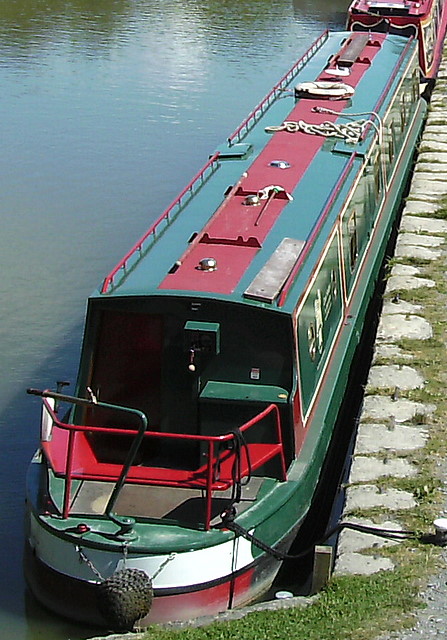
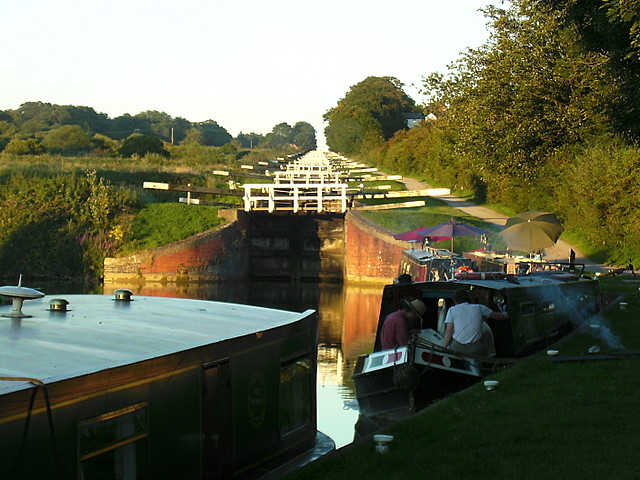
David Robinson takes a look at using CB and PMR-446 Radio on the Canals in the UK.
After 30+ years’ experience of summer holidays spent on various parts of the English canals, I thought that others might find my experiences of interest regarding the usefulness of 11M CB and PMR446 on the canals network.
Our very first canal holiday convinced me that there was a real need for both long and short range portable/mobile communications between skipper and crew.
As you gain boat handling experience, for various reasons like more comfort or a growing family, the boats you that you hire seem to get steadily longer until in no time at all you suddenly find that you are in charge of a 70ft steel monster with the displacement of an articulated truck. At 70ft, the bow seems an extremely long way from the helmsman and the blind bends and bridge holes which (thanks to Murphy’s Law) always seem to be sited on blind bends(!) do require a forward lookout with a more comprehensive means of communication than simply waving arms in a blind panic – 28 Tons moving at 3 mph takes a lot of stopping!
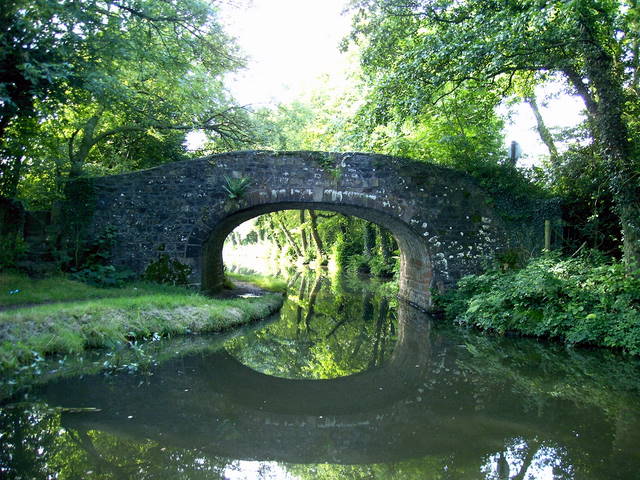
Until the legalisation of UKCB in 1981, the only options were to use tin cans linked by string (only joking), import appallingly useless portable AM equipment from the USA which had an operational range of a little further than you could shout, were fitted with a telescopic antenna guaranteed to be destroyed by a passing branch and had a power consumption which could flatten a set of batteries in a hour or two (and most of those spent in receive). The only other alternative was to use a (then primitive) 70cm Ham hand-held with all of its attendant licensing restrictions, equally short battery endurance, restricted use and with a combined system purchase price tag equivalent to another year’s holiday hire. Utterly useless again, but for different reasons.
Oh how things have changed!
CB History
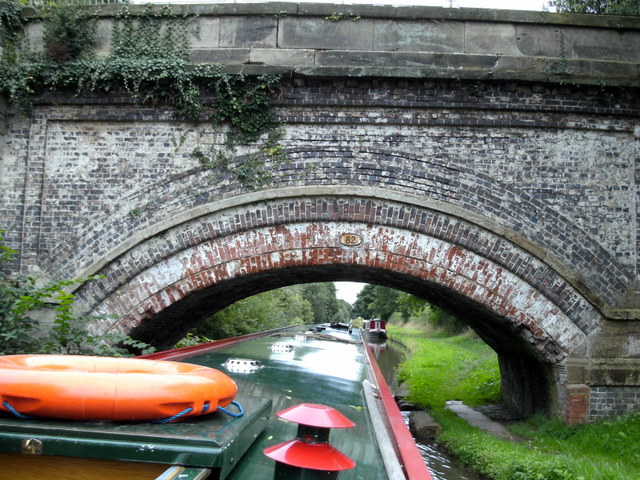
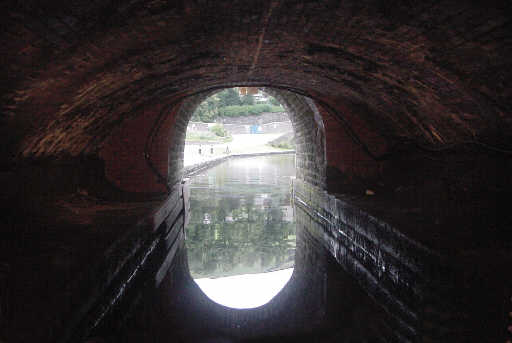
First a little bit of history for the newcomer : one happy day in 1981, thanks to prolonged lobbying by some very motivated supporters, CB became legal in the UK and we were finally assigned a frequency group and channel spacing all of our own, the logic of which I never fail to thank its originators for. Despite all the moaning that went on at the time, our own frequency allocation put us as far away from the babel of the FCC AM and SSB bands as was practical without invading the10M HF band. The comments from that era that I particularly remember all centred around the reasoning that the frequencies chosen for UKCB would make our CB equipment prohibitively expensive. It also chose FM over AM for the modulation method! Such rubbish was talked by many who would have kept silent had they had even a basic understanding of communications engineering. I suppose I am being ungenerous here because although PLL frequency synthesisers were already in use in US imports, there was still a lot of ‘rock bound’ (fixed crystal) comms equipment on the market with as many as 5 channels, (always assuming you could get the crystals). The only other alternative was to use a VFO which would definitely have caused a problem with operators seemingly incapable of using a channel change switch.
The advantages of angle modulation (FM to you) in high noise environments had not escaped the gaze of the military (AM fell out of military use towards the end of WW2) and as delightful as SSB is, it wasn’t a practical solution when choosing our CB standard.
FM was perfect for mobile to mobile use because, providing that the signal is over the receiver capture limit, FM will largely overcome impulsive interference. It will also permit communication between more than 2 stations on the same channel providing that each station is closer to its communicating partner and is receiving a stronger signal from this than from the competitor (known as ‘FM capture effect’). Perfect for busy situations like towns and magic for DX – suddenly you could get clear audio from stations which wouldn’t even move an S-meter needle. I guess this single quality produced a sudden interest in long distance networks once our own CB kit became widely available. Oh happy days!
I well remember the early comments from some of the old AM ‘pirate’ operators where I live who were staggered by the sudden improvement in range. Where once they classed 3 miles as a really good AM mobile-mobile contact they found they were achieving 5-8 miles on a regular basis without doing anything different than before. FM is also the reason why the ANL switch on a lot of rigs seems virtually useless – ANL works so much better when used with AM.
Remember, the choice of FM by the BBC for their VHF transmissions wasn’t an accident!
In 1981 by using some nice lateral thinking, Sanyo produced a UK standard synthesiser by simply changing the ROM channel lookup table in one of their existing PLL frequency synthesiser IC’s and as, they say, the rest is history. Suddenly affordable UKFM compatible kit surged onto our market and as always, some was brilliant, some mediocre and some rubbish but then I guess we all have our old favourites.
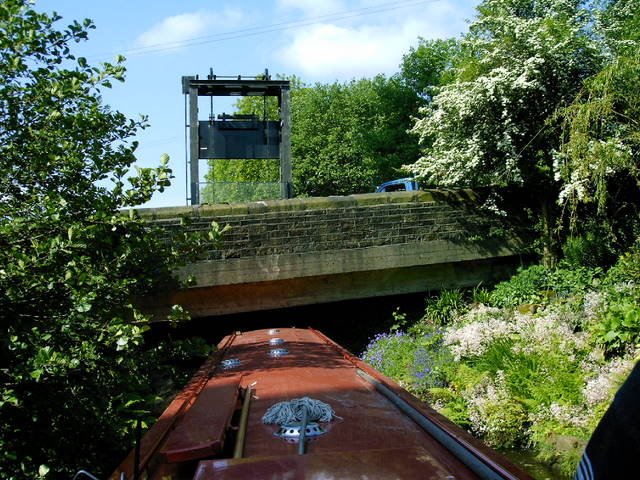
Since then things have greatly improved, CB equipment has steadily become cheaper and more capable. International standards changed to reflect the blurring of national boundaries and in Europe the CEPT CB standard was introduced which chose exactly the same frequencies as the FCC channels for its channel definitions. Cynically I think this was a ‘if you can’t beat ’em, join ’em’ move and simply recognised the huge numbers of unlicensed US rigs already in use in Europe, however FM was chosen over AM – funny that! Mobile phone type power saving methods have since been introduced into battery based portable equipment and this has made possible the continuous battery operation of portable equipment for days rather than for a single morning.
The USA introduced FRS, Europe followed suit with PMR446, production volumes were high, prices low and for me the scene was set.
My Rigs
The very first CB rig that I took on a canal holiday was a Harvard 410T (for those that can’t remember these, it was a 40 channel hand-held with a very long telescopic antenna) and although it wasn’t inherently a bad design, I improved its performance by about 400% with some very simple modifications (it is difficult to change the habits of a lifetime when you are an electronics design engineer!). This rig proved the worth of CB on its very first canal trip (this was in the days before mobile phones). Thanks to the 410T, Orange Control (the Rugby channel 19 monitor in those days) and the Rugby ambulance service, I possibly saved someone’s life when I succeeded in getting an emergency ambulance crew out to a severely injured guy with a heart problem. God bless Orange Control Rugby in responding to my 10-33. The only difficulty encountered was conveying the location of the incident to the ambulance service as neither the good lady monitor to whom I was talking nor the ambulance service were familiar with the location of Hillmorton Top Lock on the Northern Oxford canal. They might have been fine with the road system, but canals???

We finally solved the location problem and soon my lady monitor told me that she had just heard the ambulance leave the ambulance station (it seems that she lived just up the road). Ten minutes or so later two ambulance men came puffing up the towpath with a stretcher and their kit – happily they got there in time and took the guy off to hospital.
I doubt that it would be any more efficient these days with a 999 call on a mobile phone (always assuming you could get network access) and on the Ham bands you could call forever…
Score 1 for CB and the wonderful volunteer monitor network that we had back then. I am damn sure that Worcester Control would never have routed a high vehicle under a low bridge nor would they have taken an articulated truck the wrong way down a narrow street.
Since then I have always carried CB on our canal trips; these days I take a Midland Alan 48 Plus Multi mobile for the boat plus a Midland Alan 42 Multi hand-held for use by the crew for whenever they go into town for the fish and chips or to do the shopping. I find this combination pretty unbeatable when it comes to guaranteeing crew communications regardless of terrain. PMR446 is OK sometimes but canals can be set deep in cuttings and nothing beats 11 Metres HF when it comes to getting radio signals out of holes and over hills.
I rather think that this year I will give my nice new Maxon CM10 CB its first canal holiday.
My Antennas
As regards boat antennas, I use a mag-mount to which I fit a DV27 (when mobile, I can either lay this flat or set it at an angle in order to avoid branches or low bridges) and I really haven’t found a better (or cheaper) mobile antenna than the good old top-loaded DV27.
For the Midland 42, I either use a long rubber duck (the one supplied with the rig is very poor) or a centre loaded Albrecht whip, both of which make a formidable combination when used with this superb hand-held. I always use a mag-mount because when you hire a boat you can be very sure that the hire base will take a very dim view of their boat being returned with any extra holes in it. The boats are all steel and when floating in a canal they make the ultimate ground plane. If I want to ring the changes then I fit a Valor (I think these days they are called Solarcon) 300 rubber antenna fitted with a spring mount in place of the DV27 – this is low branch proof, low bridge proof and tunnel proof and although the range isn’t as good, it does work surprisingly well for its size and is a very practical solution for mobile use.

When we are on the move, all the crew keep in touch via PMR446 units. For these we generally use Cobra Microtalk and Binatone 650 sets, which are very well designed for use in the wet as well as the dry (and we do get a lot of rain sometimes!). For the steerer I generally use a headset in combination with a Cobra set in VOX mode because you do need hands-free operation at times but I also team this up with an in-line PTT switch for use in excessively windy conditions when VOX can become a real liability. The bow lookout gets a PMR so we always have a continuous intercom link between the bow and the steerer – blind bend problem solved!
One other advantage of issuing the crew with their own PMR446 units is evident when ‘lock-wheeling’ in a flight of locks. For those unfamiliar with the term it describes the synchronised emptying and filling of locks when navigating through a flight of closely spaced locks.
Done properly, ‘lock-wheeling’ works like a well-oiled machine – done badly it causes floods and wastes both time and water.
The secret of efficient lock wheeling is good crew to crew communications because then everyone then knows what the other crew members (and boats) are doing, even if they are out of sight of each other. PMR446 might seem a bit hi-tech for this but it is perfect for the job since the locking crew is never spread out over more than 0.5 mile and both the Cobra and Binatone units have absolutely no problem in communicating over this distance, regardless of topology. I don’t know exactly what speech processing technology the Binatone 650 embodies but all I can say is that it works extremely well and gives these units a real edge on range over the Cobras when used Binatone to Binatone. UHF has some very interesting properties when used in tight spaces because the short wavelengths have no problems in reflecting off various angled structures. This means that ‘line of sight’ can sometimes mean ‘out of sight’ if you get a reflecting surface in the right place and a canal tunnel can even act as a wave guide! Good fun eh!
● CTSS v DCS Sub-Channel Selection
I always use CTSS rather than DCS with the PMR’s because the sub channel detection response is more or less instant with CTSS whereas I have noticed a 1-2 second decode delay with DCS . This means that the first few words of the over are sometimes lost and if one of these had been ‘Help’…
● Calling Channel
PMR channel selection tends to pretty simple because what we start our trip with tends to be what we end up with and there seems little point in designating a standard PMR calling channel for the canals. I try to avoid PMR Channel 8 because I know that there is a trend to use this channel for DX contacts however I think that CB would definitely benefit from a standard canal calling channel – I therefore propose Channel 16 UKFM for this.
My reasoning is as follows:
- Channel16 VHF is the standard calling channel allocated for ships or boats and it seems logical to me to use the same channel number on UKCB.
- Channel 16 far enough away from Channel 19 or Channel 14 to avoid causing interference with those channels and is unlikely these days to be infested with morons because most these days seem to have moved on to higher things like cell phones or computer games.
- The designation of a standard boat calling channel would mean that British Waterways, dock authorities and other related functions could actively monitor Channel 16 UKFM CB for any boat related calls. I submit that this would have equal relevance for ship to ship or ship to shore coastal communications because plenty of boats these days carry CB as well as marine VHF for short range comms.
- It would be great to pass the time of day and exchange information with other boats and a ‘standard’ calling channel for the canal system would greatly simplify this.
In conclusion, I hope that this article will provoke others to provide their comments and experiences on a subject that is probably unfamiliar to most.
TM1 sends thanks to David G. Robinson for this excellent article.
The article and photography contained within this resource is (c)2010 by David G Robinson and may not be reproduced on any other website without prior permission.

Great article. I enjoyed that! 🙂
Great article, it’s nice to see positive suggestions for the use of CB radio.
Channel 16 for the Canal Boat calling channel!
great article, good to know someone is still using CB! as for suggesting Ch16 for Canal calling- the off road community may have already staked a claim there as 4×4=16 (possibly why it is already accepted as the off road channel in Australia and the USA)
Good article all the same
thanks
John
Sorry, I stand by Ch16 UKFM as the canal calling channel as I am sure you understand the conceptual simplicity of using Ch16 for any boat related communications. You can’t get more off-road than a canal and there certainly aren’t many canals in the USA or down under (the Aussies mostly use UHF anyway). In any case, I am sure that a travelling 4×4 would be out of range fairly quickly – canals suffer speed restrictions (4mph)!
These days we have 80 channels to choose from so why don’t the 4×4 boys just use CEPT Ch16 – after all this is the old ‘Mids’ channel and thus naturally suited to any American use.
I am glad you enjoyed the article
Dave
Having both hobbies, radio and narrowboating, I do sometimes combine the two. However, theres hardly a soul using radio on the canal system. I have 2 x pmr radios, for comms with the lock labour sometimes, or runners on very narrow sections, but rarely need this. I do set up a static DX station for HF on occasions but this is little to do with boating and all to do with using the radio in the field.
The aerial scrapes along bridges as well if left up, even with a small aerial it would regularly require lowering and raising, or mounted in a way to make it really inefficient.
My narrowboat also uses big inverters to supply 240v electrical system and these inverters interfere with the radio massively, and I have to switch them off to use any radio. This switches off the fridge and other appliances, making it inconvenient.
The other thing about narrowboating is the feeling of being away from stuff, taking in the surrounding aura, relaxing in the outdoors and a feeling of enjoyment from actual cruising along. I’m not sure that having a CB radio on gells well with that, and I’m quite into radio.
I have a small receiver I take everywhere with me, maybe one day I’ll hear a few narrowboaters on sir 🙂
That’s possibly the first article I’ve read that praises UKFM CB :>D
Ditto the comment that says it’s nice to hear of a positive use for CB. Must admit I’ve not seen many twigs on the top of narrowboats on our local canal…but maybe I haven’t been looking hard enough.
Best Wishes!
Great article, Be nice to find out what you did to boost the power!, I have the Harvard 410t, Maxcom 7E and the Harrier CBHQ, all great radios for thier time.
Testing a pair of old type CB 27/81 sets on the river Lea this week. The twigs cost more than the rigs on Ebay! I was not surprised to find that 27mhz FM had been used already on the cut. I hope it catches on, I can see it being a practical addition to an inland boat. And saving a fortune on cellphone calls.
An excellent and very informative article. Many thanks.
Good Article,
However Channel 35 has been used as the CB calling Channel on boats on the Norfolk Broads for many years and is well established as the boat calling channel there.
If one channel is to become nationwide used I would think it is better to promote an establiched one rather than to invent a new one for however good a reason you may have, otherwise we will end up with boats passing eachother on different frequencies.
Chris
Hi Chris,
I quite agree that there should be a common calling channel for boats and I only suggested Channel 16 UKFM because (as I explained in my article) Ch16 VHF is already designated as the calling channel for shipping and it didn’t require a huge leap in imagination to translate the equivalent channel number for equivalent CB use on our inland waterways.
You say that CH35 has been used for many years on the Broads as the boat calling channel for the locale (a fact of which I was unaware) and I guess that it will remain like this for the foreseeable future (where I live, CH35 is commonly used by the farming community and is generally known as ‘The Tractor Channel’). There is no reason to change your local choice even if CH16 was designated for general national use on the Inland Waterways – most modern CB transceivers support ‘Dual Watch’ so it would be extremely simple to support dual calling channel use.
Regional differences are inevitable and all I was advocating was the adoption of a single national channel with a common use for the inland waterways, which was as directly equivalent to its marine counterpart as possible.
I am glad you enjoyed my article
Dave
in kiddermister chs1-18 are full of boats many in the basin in stourport (i called it stourport on sea insted of stourport on seven as there are more boats there than the hobar in barmouth in wales) the thing they find worge is that the antennas are big for cb but the main man at the basin has got a cb so he can tell them if there is space for them to moar up